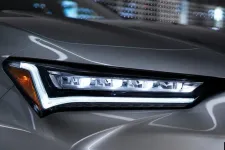afl;kjasfjU.S. regulators are finally allowing advanced headlight technology in new cars, accelerating a process begun with the
passage of a new infrastructure law late last year.
The National Highway Traffic Safety Administration (NHTSA)
formally approved use of adaptive headlights Tuesday following a petition from Toyota,
Reuters reported. That petition was filed in 2013, showing how long the regulatory battle over adaptive headlights has dragged on.
Adaptive headlights, also known as matrix headlights, consist of numerous small LED elements and mirrors that can control a light beam in complex ways. This allows the lights to be more precisely aimed, illuminating what the driver needs to see without blinding other motorists, pedestrians, or cyclists. (Editor's note: We typically refer to adaptive headlights as lights that point into corners to illuminate the proper path rather than the view off the road. This definition is for lights that can turn on and off LEDs to provide the best light ahead without blinding oncoming cars.)
This move goes a step beyond current automatic high beams, which simply shut off the high beam when an oncoming car approaches. Adaptive headlights can shut off the lighting elements facing other road users, while keeping the rest of the area in front of the car fully lit.
Such lights ran afoul of a U.S. rule dating back to 1967 that requires headlights to have separate high-beam and low-beam elements. Because adaptive headlights use the same lighting elements for both high beams and low beams, they violated this rule. The NHTSA first proposed a change to this rule
in 2018, and new regulations allowing adaptive/matrix headlights were ultimately included in the infrastructure bill signed into law by President Biden in November 2021.
Adaptive headlights have been available in other markets for years, including on some cars also sold in the U.S., such as the
Mercedes-Benz S-Class, Audi A8, and
Audi E-Tron. The NHTSA's ruling means the technology can finally be enabled on these vehicles and others in the U.S.
 U.S. regulators are finally allowing advanced headlight technology in new cars, accelerating a process begun with the passage of a new infrastructure law late last year. The National Highway Traffic Safety Administration (NHTSA) formally approved use of adaptive headlights Tuesday following a petition from Toyota, Reuters reported. That petition...
U.S. regulators are finally allowing advanced headlight technology in new cars, accelerating a process begun with the passage of a new infrastructure law late last year. The National Highway Traffic Safety Administration (NHTSA) formally approved use of adaptive headlights Tuesday following a petition from Toyota, Reuters reported. That petition...
